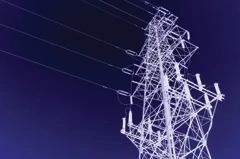Enabling Smart Grid Volt/VAR Control

Optimizing power flow using a distribution model
BY TIM TAYLOR, Ventyx
Today’s emphasis on implementing energy efficiency programs and limiting peak demand growth has driven renewed interest in the most effective method to implement Smart Grid volt-ampere reactive control, or Smart Grid volt/VAR control, on distribution systems. This includes the implementation of conservation voltage reduction (CVR), in which the system demand is reduced through controlled reduction in operating voltage at customer load points. Effective CVR implementations can typically reduce demand two to four percent.
Model-based volt/VAR optimization (VVO) utilizes a dynamic operating model of the distribution system, in conjunction with a rigorous mathematical optimization algorithm, to optimize the performance of the distribution system with a given operating objective. The basis of the dynamic operating model of the distribution system is typically the distribution connectivity model as found in a distribution organization’s geographic information system (GIS). The model is adjusted in the control room of the utility either through operator action or through an interface to the SCADA (supervisory control and data acquisition) system, which transmits changes in the status of system components. The system components that can change states include distribution breakers, switches, reclosers, fuses, jumpers, and line cuts.
The benefit of utilizing a dynamic model is that the volt/VAR optimization always uses the “as-operated” state of the network. As outages and system reconfigurations occur, the network maintains proper connectivity of loads, capacitor banks, regulators, and other feeder components. This ensures the determination of the voltage regulator taps, load tap changer taps, and switched capacitor states always uses the present operating configuration of the system.
The savings in deferred generation plants or capacity procurement costs, lower system losses, lower customer energy consumption, and reduced operating and maintenance costs results in model-based volt/VAR optimization having one of the strongest business cases for Smart Grid functionality.
Due to inherent technology limitations, prior volt/VAR control methods—namely local-based controls and one-way centralized radio-controlled systems—did not permit systematic optimization of voltage and VAR controls for maximum effectiveness in loss reduction and CVR demand and energy reduction. Legacy systems also required additional servers and communications infrastructure that did not enable additional Smart Grid functionality such as fault location, self-healing restoration, and comprehensive distribution system monitoring and control.
With the commercialization of model-based volt/VAR optimization, distribution organizations are now able to achieve maximum performance benefits with reductions in demand and energy, real power losses, and operating costs.









